#rpa in hr
Explore tagged Tumblr posts
Text
0 notes
Text
Human Resources Software: Leveraging RPA to Transform HR Operations
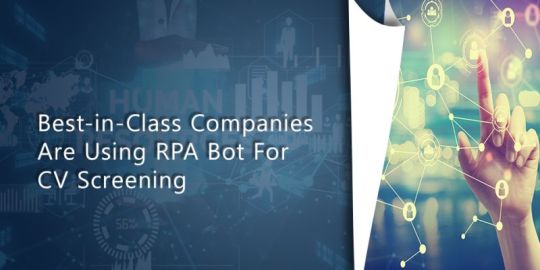
Human resources software that leverages RPA can help you transform your HR operations. Discover how RPA can help you automate tasks, improve accuracy, and boost efficiency to achieve in HR.
#hr software#human resources management software#hr in software#RPA in HR#Human Resources Software#RPA in Human Resources#Benefits of RPA in HR#RPA use cases in HR#RPA for HR service providers#Human resources software
0 notes
Text
Why Choose a Salesforce Cloud Data Platform Course Online?
Master Salesforce Cloud Data Platform Course with an advanced online course designed for data-driven professionals. Learn to manage customer data, implement effective marketing strategies, and streamline sales processes using Salesforce CDP. This hands-on course includes real-world projects, expert mentorship, and certification preparation. Enhance your data integration and analysis skills to drive business success. Enroll today to transform your career with Salesforce expertise!
#salesforce cloud data platform course#mulesoft training online#mulesoft course online#mulesoft online training#aws course online#togaf training online#hr training online classes#catia training online#rpa training online#catia course online#aws training online#online certification trainings#blockchain training online#tally training online#rpa course online#catia online training#blockchain online training#catia online course#servicenow training online#togaf course online#hadoop online training#servicenow course online#iot training online#salesforce marketing cloud online training#internet of things online course#hr online training#internet of things online training#rpa online course#online training courses#online cad training
2 notes
·
View notes
Text
Elevate Business Processes with RPA & AI - Centelli
Streamline your business with Centelli’s RPA and AI-enabled automation solutions. From HR and finance to customer service and project management, we reduce manual tasks and boost efficiency. Scalable for startups and enterprises in Dubai and UAE, our solutions help you stay ahead in today’s competitive market.
Ready to automate? Visit us today!
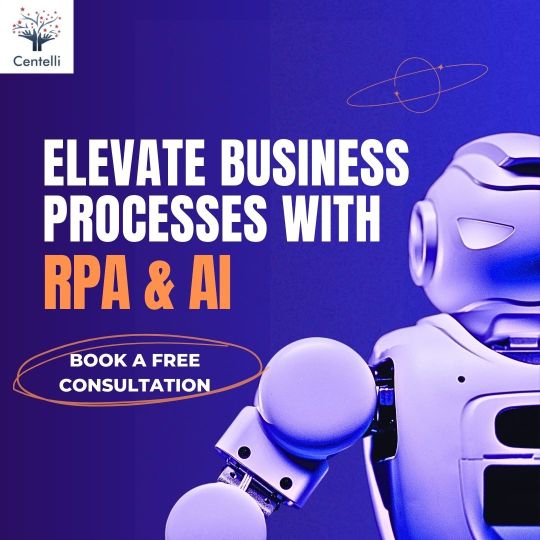
0 notes
Text
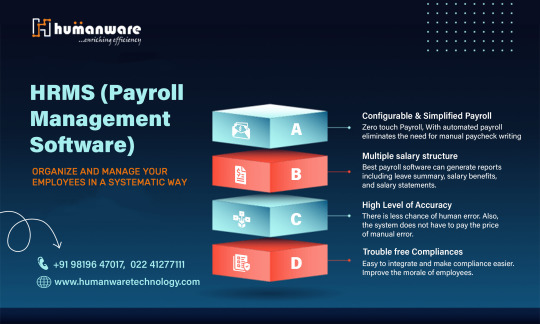
Humanware HR software gives your team a single place to manage all of your HR needs with modern HR Tools which help to make light work of heavy tasks. Quick and hassle free payroll process, Less Stress and More Productivity.
Schedule demo : https://www.humanwaretechnology.com/Best-HR-Software.html
#hrms#hrms solution#hrms system#hr software#hr#payroll#hrms payroll software#automation#rpa software#hr system#hrms company#management
0 notes
Text



Wait, there’s more ! D-21 found. D 21 was created by the Skunk Works designer Kelly Johnson. It is a drone capable of going faster than an SR 71. It’s purpose was to go deep into China and photograph their nuclear weapons facility.
1604 Hrs. December 20, 2009. In the Back Storage Yard of the Pima Air & Space Museum Outside Tucson, Arizona.
I pet airplanes when I can. I’m not exactly sure why, maybe to be able to say I did. Maybe to try to gain some tactile sense of their history. Maybe to absorb something from them, if such a thing is possible. Maybe so that, when I am old and dying, I can reflect back on what it felt like to stand next to them and touch them. I don’t know why I touch them and stroke them, but I do.
The D-21 is dusty and warm in the late afternoon Arizona sun. Its titanium skin is hard, not slightly forgiving like an aluminum airplane. It gives away nothing. Silent. Brooding. After I touch it my hand came away with some of the dust from it. I don’t wipe it off. Sometime later in the coming years, the D-21B drone, number 90-0533, is brought inside the vast restoration facility at the Pima Air & Space Museum and beautifully restored. Now it lies in state, on display inside the museum.
But when I first found it sitting abandoned in the storage yard, dusty and baking in the Sonoran Desert sun, it felt like its warm titanium skin still had some secret life left in it.
The D-21 is truly a “drone”, not a remotely piloted aircraft (RPA). Its flight plan is programmed into a guidance system. It is launched from a mothership launch aircraft at speed and altitude. It flies a predetermined spy mission from 17 miles above the ground and flashes over at three times the speed of sound. It photographs massive swaths of land with incredible detail and resolution. And because of its remarkably stealthy shape, no one will ever know it was there.
I found part of an article by the Aviationist on Google . TOM DEMERLY
@HABUBRATS71 via X
23 notes
·
View notes
Text
Driving Business Efficiency with RPA Automation in Malaysia
In today’s fast-paced digital landscape, RPA automation Malaysia is gaining momentum across industries looking to optimize operations and reduce manual tasks. At the forefront of this transformation is CR Digital Sdn. Bhd, a trusted name in Malaysia offering cutting-edge Robotic Process Automation (RPA) solutions.
CR Digital Sdn. Bhd helps businesses automate repetitive and rule-based processes by deploying software robots that mimic human actions within digital systems. From data entry and invoice processing to workflow management and customer service automation, their RPA solutions significantly boost productivity while minimizing errors and operational costs.
By implementing intelligent RPA bots, CR Digital Sdn. Bhd empowers organizations to streamline tasks across finance, HR, logistics, and customer service departments. The result is faster execution, improved accuracy, and better compliance. The company offers customized RPA strategies tailored to specific business needs, enabling smooth integration with existing IT environments.
With a strong focus on innovation and customer satisfaction, CR Digital Sdn. Bhd ensures end-to-end RPA deployment — from consulting and development to implementation and ongoing support. Their experienced team works closely with clients to identify automation opportunities that deliver measurable impact.
Alongside automation, CR Digital Sdn. Bhd is also a leading provider of text-to-text Generative Malaysia text to text GenAI, offering powerful tools for content generation, document transformation, and natural language processing. Their GenAI technology enables businesses to convert simple input texts into high-quality, structured, and contextually accurate output in a matter of seconds.
Whether it's writing reports, summaries, customer replies, creative content, or transforming legal and technical documents, CR Digital Sdn. Bhd’s GenAI models are trained to generate human-like text that supports business efficiency and communication. This technology is particularly useful in sectors such as marketing, legal, education, finance, and customer service, where speed and accuracy in content generation are vital.
With user-friendly interfaces and secure integration options, the GenAI solutions provided by CR Digital Sdn. Bhd are designed to be scalable, customizable, and aligned with local language preferences and business workflows.
Whether you're looking for advanced RPA automation in Malaysia or exploring text-to-text GenAI to enhance your business output, CR Digital Sdn. Bhd is your reliable technology partner. With a strong commitment to innovation and tailored digital solutions, the company is helping Malaysian enterprises unlock new levels of efficiency, creativity, and growth.
1 note
·
View note
Text
The Impact of AI Software on Business: Enhancing Efficiency with AI Business Tools
In today's fast-paced digital landscape, businesses are continuously seeking innovative solutions to enhance productivity and streamline operations. AI software for business and AI business tools have emerged as transformative technologies, enabling organizations to harness the power of artificial intelligence to improve efficiency, decision-making, and customer satisfaction. This article explores the benefits, applications, and best practices of integrating AI software into your business strategy.
Understanding AI Software for Business
AI software for business encompasses a wide range of applications and tools designed to perform tasks that typically require human intelligence. These can include natural language processing (NLP), machine learning (ML), computer vision, and robotic process automation (RPA). By leveraging these technologies, businesses can automate routine tasks, analyze large datasets, and gain insights that drive strategic decision-making.
Benefits of AI Software
Increased Efficiency: One of the primary advantages of AI software is its ability to automate repetitive tasks. For example, businesses can use AI-powered chatbots to handle customer inquiries, allowing human agents to focus on more complex issues.
Data Analysis and Insights: AI tools can analyze vast amounts of data quickly, providing valuable insights that help businesses make informed decisions. This capability is particularly beneficial in areas such as market research, customer behavior analysis, and financial forecasting.
Enhanced Customer Experience: AI software can personalize customer interactions by analyzing user behavior and preferences. For instance, AI can recommend products based on past purchases, improving customer satisfaction and loyalty.
Cost Savings: By automating tasks and improving operational efficiency, businesses can significantly reduce labor costs. AI tools can help identify inefficiencies and areas for improvement, leading to further cost reductions.
Scalability: AI business tools can easily scale with a company’s growth. As a business expands, AI solutions can adapt to increasing data volumes and more complex operational needs without requiring a complete overhaul.
Key Applications of AI Business Tools
AI business tools can be integrated into various business functions, enhancing productivity and effectiveness. Here are some key applications:
1. Marketing Automation
AI software can analyze customer data to optimize marketing campaigns. Tools like predictive analytics can forecast customer behavior, allowing businesses to tailor their marketing strategies for better engagement. Moreover, AI can automate social media posting and email marketing, ensuring timely communication with minimal effort.
2. Customer Service
AI-powered chatbots are revolutionizing customer service by providing instant responses to customer inquiries. These bots can handle multiple requests simultaneously, improving response times and reducing wait times for customers. Additionally, AI can analyze customer interactions to identify common issues and suggest improvements to service processes.
3. Sales Optimization
AI business tools can streamline the sales process by providing insights into customer behavior and preferences. Sales teams can utilize AI for lead scoring, identifying high-potential leads based on historical data. This targeted approach helps sales representatives prioritize their efforts, increasing conversion rates.
4. Human Resources Management
AI software can transform human resources processes by automating tasks such as resume screening and employee onboarding. AI tools can analyze candidate profiles, helping HR professionals identify the best-fit candidates quickly. Furthermore, AI can monitor employee performance and engagement, enabling proactive measures to enhance workplace satisfaction.
5. Supply Chain Management
In supply chain management, AI can optimize inventory management, demand forecasting, and logistics. AI algorithms analyze historical data and market trends to predict demand, helping businesses maintain optimal inventory levels. This reduces carrying costs and minimizes the risk of stockouts or overstocking.
Best Practices for Implementing AI Software
While integrating AI software into your business can yield significant benefits, it’s essential to approach implementation strategically. Here are some best practices:
1. Define Clear Objectives
Before adopting AI software, clearly define your business objectives. Identify the specific problems you aim to solve or the processes you wish to improve. This clarity will guide your selection of AI tools and help measure their impact.
2. Start Small
Begin with small-scale AI projects to test their effectiveness before rolling them out on a larger scale. This approach allows you to evaluate the software’s performance, identify potential challenges, and make necessary adjustments.
3. Invest in Training
Providing training for your team is crucial to ensure successful adoption. Employees should understand how to use AI tools effectively and be aware of the benefits they bring. Ongoing training will also help them adapt to new features and updates.
4. Monitor Performance
Continuously monitor the performance of AI software to assess its impact on your business. Collect data on key performance indicators (KPIs) related to the areas you aim to improve. Regular evaluations will help you refine your AI strategy and make informed decisions about future investments.
5. Prioritize Data Security
As AI software relies on data to function effectively, it’s essential to prioritize data security and privacy. Implement robust security measures to protect sensitive information and comply with relevant regulations. Ensure that your AI solutions follow best practices for data handling and storage.
Conclusion
Incorporating AI software for business and AI business tools can significantly enhance operational efficiency and drive growth. By automating tasks, providing valuable insights, and improving customer interactions, businesses can stay competitive in an ever-evolving market. As you explore the potential of AI, remember to approach implementation thoughtfully, keeping in mind the specific needs and objectives of your organization. With the right strategy, AI can be a game-changer for your business, paving the way for increased productivity and success.
3 notes
·
View notes
Text
5 ways RPA can streamline your business operations

Robotic Process Automation (RPA) is a technology that has been gaining traction in recent years. It is a software that can be programmed to carry out tasks in a software interface that would normally be done by a human. RPA is usually used in instances where a task is repetitive, but vital to operations, such as collecting data from various siloed spreadsheets. This doesn’t just reduce the employee workload, it also reduces the risk of human error, improves accuracy, and can even help businesses ensure that they are compliant with data privacy regulations.
Here are 5 ways RPA can streamline your business operations:
Data mining
RPA can help extract useful data from your company’s vast data storage silos and use them to paint detailed, accurate pictures of customer behavior, product usage, employee engagement, sales figures across different regions, and pretty much anything that is measured using digital datasets. Business transformation RPA is really the only viable way of conducting data mining, as manually trawling through spreadsheets is impossibly slow and has a high chance of fatigue-induced error for humans.
Invoice processing
Invoice processing is one of many important tasks that finance departments undertake. An accidentally added zero could cause mayhem for your organization. Business transformation RPA removes the chance of human error entirely and relieves finance employees from the rote task of editing, checking, and sending invoices. By setting up an RPA bot to match customers and orders and automatically draw up invoices, businesses can save time, increase accuracy, and avoid possible disasters.
Employee onboarding
Automation isn’t reserved only for data mining and finance tasks. It can also have an impact on the human side of a business too. HR departments across the world use automation to help manage crucial areas of the business – an example of this can be found at the beginning of the employee journey. The onboarding process usually consists of background checks, collecting payslip information, references, and more. RPA can help automate these tasks, freeing up HR personnel to focus on more important tasks.
Customer service
RPA can help businesses automate their customer service processes, such as answering frequently asked questions, handling customer complaints, and more. By automating these processes, businesses can save time and money, while also improving customer satisfaction.
Supply chain management
RPA can help businesses automate their supply chain management processes, such as inventory management, order processing, and more. By automating these processes, businesses can save time and money, while also improving accuracy and efficiency.
In conclusion, RPA can help businesses streamline their operations by automating repetitive tasks, reducing the risk of human error, and improving accuracy. By implementing RPA, businesses can save time and money, while also improving customer satisfaction and employee engagement.
2 notes
·
View notes
Text
Understanding the Power of SAP Robotic Automation
1. Introduction
In a world where data and processes drive businesses, sap robotic automation is a technology that stands out. It promises to transform the way enterprises operate by automating repetitive tasks, enabling employees to focus on more strategic activities.
2. What is SAP Robotic Automation?
SAP Robotic Automation, often referred to as RPA (Robotic Process Automation), is a technology that uses software robots or "bots" to automate routine and rule-based tasks within an organization. These bots mimic human actions, interact with various systems and applications, and can work around the clock without rest.
3. How Does SAP Robotic Automation Work?
SAP Robotic Automation works by employing bots to execute predefined tasks. These bots are trained to follow specific workflows, interact with user interfaces, extract and input data, and make decisions based on predefined rules. They can seamlessly integrate with existing software systems, making them highly versatile.
4. Benefits of SAP Robotic Automation
Streamlined Processes
One of the primary advantages of SAP Robotic Automation is the streamlining of processes. It allows organizations to automate repetitive tasks, reducing the time and effort required to complete them.
Reduced Errors
Humans are prone to errors, but bots are not. By automating tasks, SAP Robotic Automation significantly reduces the chances of human error, leading to higher accuracy in operations.
Enhanced Productivity
With routine tasks automated, employees can focus on more strategic and creative aspects of their roles, ultimately leading to increased productivity and job satisfaction.
5. Applications of SAP Robotic Automation
Finance and Accounting
In the finance sector, SAP Robotic Automation can automate tasks such as data entry, invoice processing, and reconciliation, allowing financial professionals to concentrate on financial analysis and strategy.
Human Resources
Automating HR tasks like employee onboarding, payroll processing, and attendance tracking frees HR teams to focus on employee engagement and talent development.
Supply Chain Management
SAP Robotic Automation can optimize supply chain processes by automating inventory management, order processing, and demand forecasting.
6. Implementing SAP Robotic Automation
Selecting the Right Processes
Not all processes are suitable for automation. Organizations should carefully choose which tasks to automate based on criteria like frequency, rule-based nature, and potential ROI.
Integration with Existing Systems
Smooth integration with existing software and systems is crucial for the success of SAP Robotic Automation projects.
Training and Development
Employees need to be trained to work alongside bots and understand how to manage and maintain automated processes.
7. Challenges and Solutions
Data Security Concerns
As bots interact with sensitive data, ensuring data security is a top priority. Implementing encryption and access controls can mitigate these concerns.
Change Management
Introducing automation can lead to resistance among employees. Effective change management strategies are essential to ensure a smooth transition.
Maintenance and Support
Regular maintenance and timely support are necessary to keep the automation ecosystem running smoothly.
8. Future Trends in SAP Robotic Automation
The future of SAP Robotic Automation holds exciting possibilities, including enhanced AI capabilities, greater integration with IoT devices, and advanced analytics for smarter decision-making.
9. Real-Life Success Stories
Explore how leading organizations have harnessed the power of SAP Robotic Automation to achieve remarkable results.
SAP Robotic Automation is a game-changer for businesses looking to boost efficiency, reduce errors, and empower their workforce. By harnessing the power of automation, organizations can stay competitive in today's rapidly evolving business landscape.
Read More : https://www.beezlabs.com/tulip
2 notes
·
View notes
Text
Business Process Optimization Experts in Hyderabad | Techally Labs

In the fast-paced market of today, companies must run efficiently to stay ahead in the competition. As Hyderabad's top Business Process Optimization Company, Techally Labs enables organizations to make their operations leaner, waste-free, and more productive using intelligent, technology-based solutions. Their solutions enable companies to transform into lean, data-driven organizations.
1. Process Mapping and Analysis
Techally Labs begins with a dive deep into your current business processes. Their experts employ tried-and-tested methodologies such as Six Sigma and Lean analysis to reveal inefficiencies, bottlenecks, and unnecessary steps—opening the door to measurable improvement.
2. Technology-Enabled Automation
After identifying the core areas, Techally Labs incorporates smart automation solutions in the form of workflow engines, RPA (Robotic Process Automation), and AI-driven systems. These automation tools eliminate manual labor, accelerate execution, and increase accuracy in departments like finance, HR, customer service, and operations.
3. Tailor-made Digital Solutions
Rather than using out-of-the-box software, Techally Labs develops tailor-made digital solutions that complement your individual business model. Whether a task management system or a bespoke ERP, each solution is crafted to optimize and grow your business.
4. Cross-Departmental Collaboration
Their optimization strategy is all-encompassing. Techally Labs operates department-wide—IT, HR, logistics, finance—to make sure the transition is smooth and integrated. This encourages an organization of teamwork and ongoing betterment.
5. Real-Time Monitoring and Optimization
The process doesn't stop there. Techally Labs incorporates real-time monitoring tools and analytics dashboards so that management can monitor KPIs, detect new inefficiencies, and keep optimizing as the business matures.
Conclusion:
For companies looking for business process optimization professionals in Hyderabad, Techally Labs is the strategic ally who brings clarity, efficiency, and growth. Their combination of process know-how and technology implementation ensures your company performs at its best—prepared for today's challenges and tomorrow's opportunities.
For More Details : Contact Us
0 notes
Text
Transform your business with payroll automation! Explore the top 10 benefits, from enhanced accuracy to time savings. Streamline processes, reduce errors, and elevate efficiency in managing payroll seamlessly. Discover the advantages that make automation a game-changer for your business.
0 notes
Text
"Transform Payroll Processes with RPA in Payroll Management"

Discover how Robotic Process Automation (RPA) simplifies payroll processes, reduces errors, and boosts efficiency for modern businesses.
0 notes
Text
What Makes CATIA Course Online Perfect for Design Enthusiasts?
Master CATIA Course Online with this expertly curated course for mechanical and product design professionals. Learn 3D modeling, analysis, and simulation from industry experts. Designed for both beginners and advanced learners, the course includes real-world applications and project-based training. Gain certification and enhance your design skills to excel in automotive, aerospace, and engineering industries. Join today and build your expertise in CATIA!
#salesforce cloud data platform course#mulesoft training online#mulesoft course online#mulesoft online training#aws course online#togaf training online#hr training online classes#catia training online#rpa training online#catia course online#aws training online#online certification trainings#blockchain training online#tally training online#rpa course online#catia online training#blockchain online training#catia online course#servicenow training online#togaf course online#hadoop online training#servicenow course online#iot training online#salesforce marketing cloud online training#internet of things online course#hr online training#internet of things online training#rpa online course#online training courses#online cad training
2 notes
·
View notes
Text
Transform HR with Intelligent Automation - Centelli
Modernize your HR with Centelli. Automate recruitment, payroll, compliance, and more with advanced solutions tailored for all business sizes. Save time, reduce errors, and enhance the employee experience. Stay competitive in Dubai’s fast-paced market with our custom HR tools. Simplify HR today—Learn more!
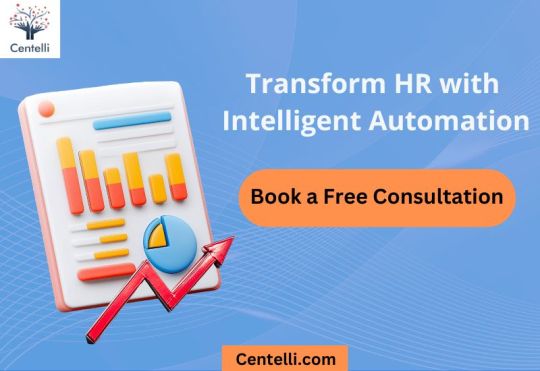
0 notes
Text
How Much Does It Cost to Develop a Voice Chat App Like Clubhouse in 2025?
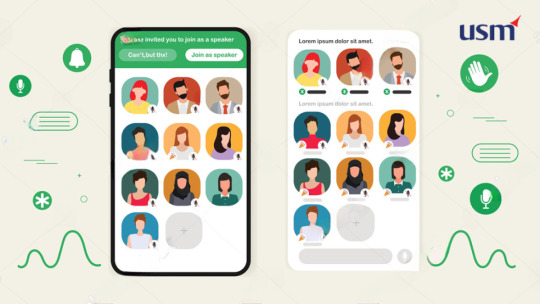
Read More: https://bit.ly/4ntnrkp
Developing a voice chat app like Clubhouse in 2025 involves costs based on features like real-time audio streaming, user moderation, and social networking elements. The budget also depends on app design, backend infrastructure, and cross-platform support. Adding advanced features like AI-powered recommendations may increase development time. Partnering with experienced developers ensures a scalable and secure app.
USM Business Systems Services: Mobile app development Artificial Intelligence Machine Learning Android app development RPA Big data HR Management Workforce Management IoT IOS App Development Cloud Migration
Contact Us: https://usmsystems.com/contact-us/ Phone: 1-703-263-0855 Email: [email protected]
#VoiceChatAppCost#ClubhouseAppCost#BuildVoiceApp2025#AudioChatAppPricing#ClubhouseCloneCost#VoiceAppDevelopment#CostToBuildVoiceApp#RealTimeAudioApp
0 notes